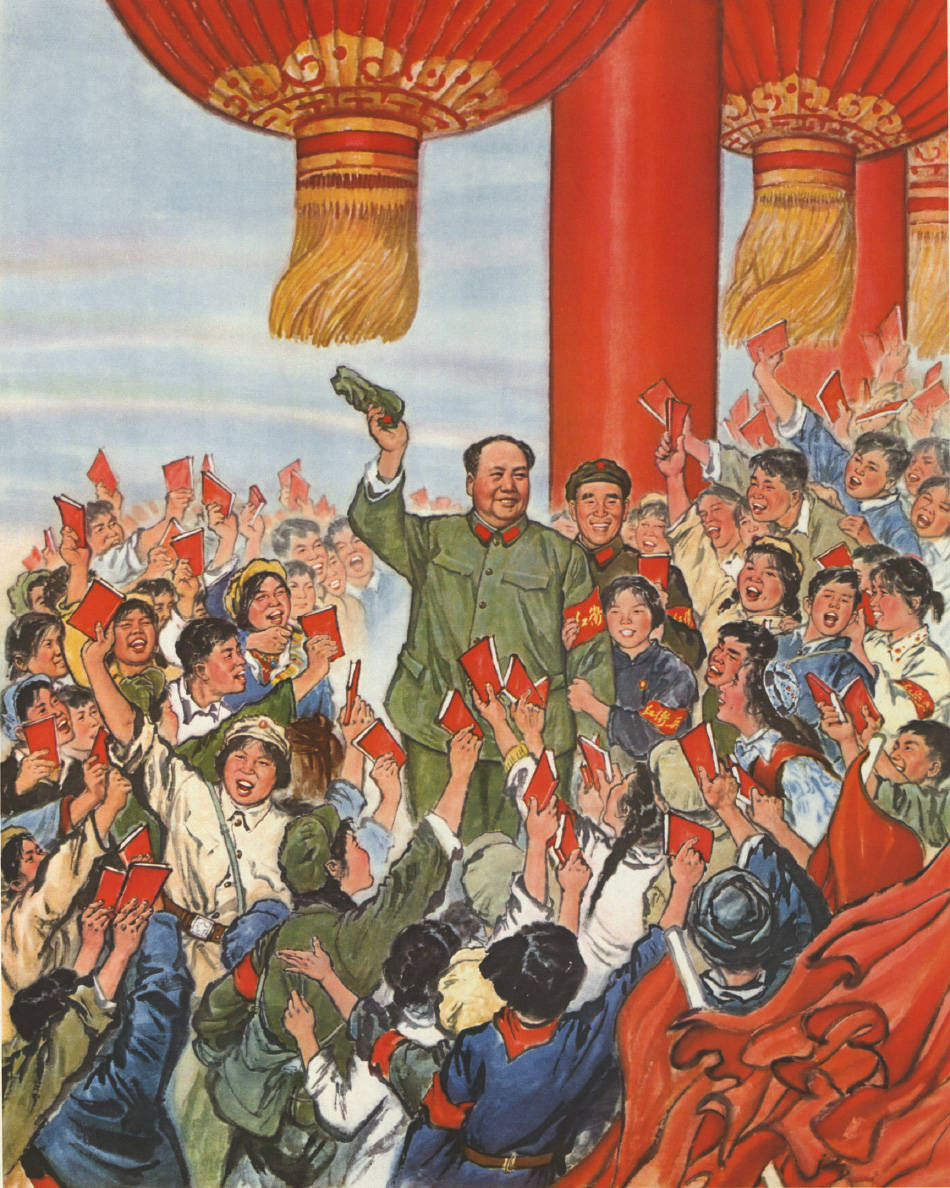Visual Source 21.4
The Cult of Mao
A central feature of Chinese communism, especially during the Cultural Revolution of 1966–1976, was the growing veneration, even adoration, of Chairman Mao. Portraits, statues, busts, and Mao badges proliferated. Everyone was expected to read repeatedly the “Red Treasured Book,” which offered a selection of quotations from Mao’s writings, believed to facilitate solutions to almost all problems, both public and private. Many families erected “tablets of loyalty” to Mao, much like those previously devoted to ancestors. People made pilgrimages to “sacred shrines” associated with key events in his life. Schoolchildren began the day by chanting, “May Chairman Mao live ten thousand times ten thousand years.”
And Mao was the centerpiece of endless posters. Visual Source 21.4, a poster created in 1968, portrays a familiar scene from the Cultural Revolution. Millions of young people, organized as Red Guards and committed to revolutionary action, flocked to Beijing, where enormous and ecstatic rallies allowed them to catch a glimpse of their beloved leader and to unite with him in the grand task of creating communism in China. The poster’s caption reads: “The reddest, reddest, red sun in our heart, Chairman Mao, and us together.”

Question
What relationship between Mao and his young followers does the poster suggest? Why might some scholars have seen a quasi-religious dimension to that relationship?
Question
How do you understand the significance of the “Red Treasured Book” of quotations from Mao, which the young people are waving?
Question
How might you account for the unbridled enthusiasm expressed by the Red Guards? In this case, the poster portrays the realities of these rallies with considerable accuracy. Can you think of other comparable cases of such mass enthusiasm?